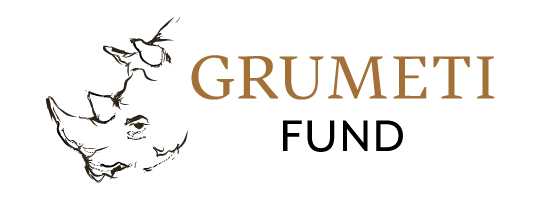Have you ever seen an elephant cry?
A call comes in. An 18-month-old elephant calf has a snare caught on her leg. We run to the rescue as fast as we can and the vet quickly tranquilizes her so that we can proceed to remove the wire trap. Despite our good intentions, the calf’s mother is not happy to see us. Our noise and cars resembled too closely the angry villagers they often confront during their forays into crops at night. The calf’s mother huffs and puffs trying to push us and our vehicles away from her now sedated calf. She screams in agony and tears welled up at the sight of her unmoving calf, and the small heard of seven elephants hurdled around her and her fallen calf to ensure their safety. Anxious and determined to keep her baby safe, she charges at our vehicle only to return to her attempt to wake her calf.

It becomes adamantly clear that our noise and force is no match for the love of a mother elephant. We have to tranquillise her too because she isn’t able to bear the sight of what appears to be her seemingly half-dead calf in our care. We march in to de-snare the calf as soon as the mother elephant falls asleep. The calf’s wounds are not too deep; she will survive. The vet cleans the injury; we grab blood samples and give the baby a good wash. We revive her with another injection. She wakes up and screams out to the herd from the top of her lungs. Her mother is also woken, and the two are reunited.

Snares are not uncommon in the Serengeti ecosystem. Though not meant to capture elephant parse, we receive many cases of snared elephants. We record every incident of its kind and work closely with government authorities to make sure no human-harm befalls these gentle beasts. However, human-elephant conflict does not stop at snares. In the villages bordering the concession, 99% of people are farmers and their number one livelihood threat is elephants. We often receive cases of elephant invading people’s farms. Consequently, many of our efforts are focused on mitigating these conflicts, which occur daily in and around crop planting and harvesting times.

A dedicated team of researchers monitor elephant movements through GPS and satellite tracking collars that appear in the EarthRanger visualisation program and who can also be found via telemetry in the field. Each collar is connected to a geo-fence, sounding an alarm in the Ops Room every time a collared elephant moves out of the protected area and toward the village. The team records elephant movements over time to determine both their migratory patterns and their current locations to help stir them away from human habitats. The collaring project is a small effort in the plethora of research and monitoring that gets done here. We use state-of-the-art technology to accurately collect, analyse and shares ecological data to guide our decision making.
A notable decision outcome that was born out of conducted research is the Black Rhino Re-establishment Project which aims to restore eastern black rhino populations to the Serengeti. As this multi-phase project unfolds, the Research & Monitoring Department will continue to play a vital role in the observation -and when there is a need- intervention as the rhinos acclimatize and get used to the area.

Beyond this unique project, other department work includes monitoring changes in vegetation to map out herbivore movement patterns over time. The data collected also helps determine fire management strategies as well as understanding the usefulness of some of the grazing lands. The department also records camera trap surveys to monitor the distribution of some hard to come about mammals and conducts wildlife census and riparian surveys that help note the abundance of wildlife. Regular research and close monitoring ensure that we prevent animal habitat distractions before it is too late, catch alien plants as soon as they appear and mitigate human-wildlife conflicts. All the work that is done here help us come up with solutions for the problems that we face here in the Serengeti ecosystem, but which can be applied in similar scenarios across the country and even continent.

In that same vein, we are establishing RISE: Research & Innovation for the Serengeti Ecosystem. RISE aims to effectively bridge the gap between scientific research and management decision making. We are prioritising topical interests that are relevant to where we are so that we can collect data that justify our decisions but are hoping to build capacity for wildlife conservation efforts across the country.
Both the Research and Monitoring department and RISE will help us get closer to fulfilling our mission to contribute to the conservation of the Serengeti ecosystem for future generations.




